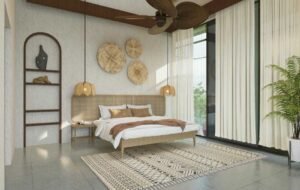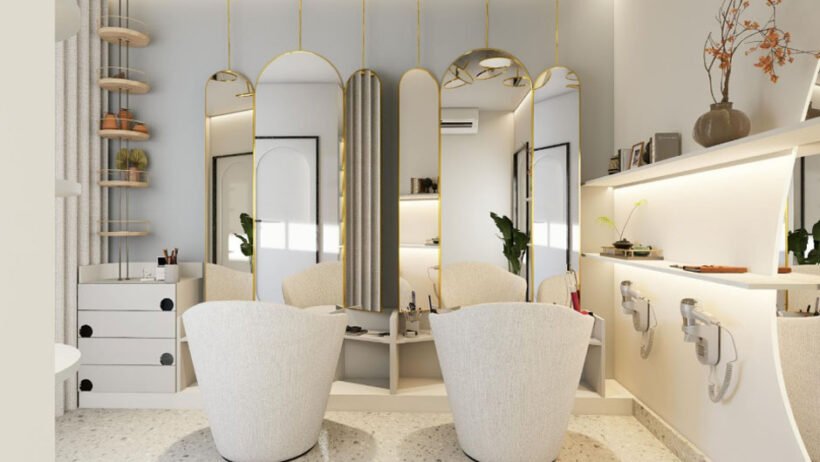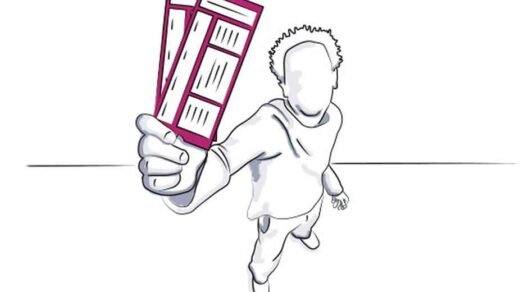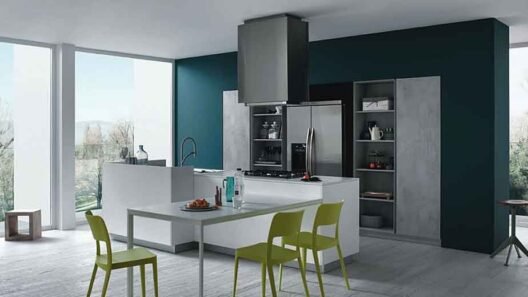Ever scroll through the online portfolios of the top 3d rendering companies and wonder why their projects—even those for vastly different buildings—all possess a singular, undeniable feel? That consistent aesthetic isn’t luck; it’s a strategic choice, a repeatable process, and a massive competitive advantage. When you work with the top rendering firms, you’re not just buying images; you’re purchasing a disciplined visual language. This systematic approach is the master key to unlocking higher project approval rates and pre-sales velocity for developers, and ultimately, securing more lucrative RFPs for principal architects.
Who This Playbook Is For: CDO / VP Design & Construction, And Principal Architect
Listen, we’re talking to the people who sign off on million-dollar budgets and stake their reputation on project outcomes: the Chief Development Officer and the Principal Architect. You need to hit your KPIs. A CDO lives and dies by metrics like time-to-market and pre-sales velocity. A fractured, inconsistent visual narrative slows down every meeting—from getting board sign-off to securing a buyer’s deposit. For the Principal Architect, your goal is a high RFP win-rate and minimizing those painful, unprofitable revisions. Why is visual consistency important? Because it acts as an unspoken promise of quality and professionalism. It simplifies complex decisions, freeing up mental bandwidth for the bigger design challenges.
Why Visual Consistency Moves KPIs
Think of your portfolio as a library of books. If every book has a different cover design, typeface, and jacket material, the whole collection looks chaotic, diminishing its perceived value. When your project visuals—your architectural CGI companies’ deliverables—are inconsistent, it creates visual friction. Consistent lighting, composition, and mood, however, move your key performance indicators. It speeds up the time-to-approval because the planning panel knows exactly what visual information to expect. It reduces rework/change orders internally because everyone agrees on the visual standard from day one. And critically, for developers, a strong visual brand consistency in marketing materials directly translates into a higher click-through rate (CTR) on digital campaigns, pulling you closer to those crucial pre-leasing thresholds. Consistency breeds confidence; confidence fuels speed. It’s an economic mandate disguised as an aesthetic choice.
Analyze Top 3D Rendering Companies: Lighting, Composition, Mood.
So, how do the best 3d rendering firms achieve that visual discipline? They have an internalized system. We need to reverse-engineer that system by auditing a few key top rendering companies you respect. Grab 3-5 of their best images and dissect them. It’s a fun forensic investigation.
- Camera Language: Is the camera always at eye-level? Do they use ultra-wide lenses for drama or neutral 50mm for realism? Are vertical lines always perfectly straight?
- Tone-Mapping/LUT: Is the image warm and golden (high saturation, warm color filter) or cool and documentary-style (neutral, low contrast)?
- Key-to-Fill Ratio: How dramatic are the shadows? Are they deep and high-contrast, or soft and subtly diffused? This defines the mood.
- Time-of-Day/Weather: Are all exteriors shot at the “magic hour,” or do they opt for a neutral, slightly overcast daytime to enhance commercial honesty for planning panels?
- People/Props Policy: Are the people diverse, stylish, and static, or are they blurred and dynamic? What story do the props tell about the resident?
This audit defines your firm’s best archviz studios. It transforms vague language like “make it look cool” into specific, actionable parameters that reduce costly back-and-forth iterations.

Build A Repeatable Style System And A Mini “CGI Brand-Bible”
Once you’ve cracked the code of the best architectural rendering companies, you must codify it. This becomes your CGI Brand-Bible, a document every vendor and in-house artist must adhere to. This isn’t just a mood board; it’s a technical spec.
Your Mini CGI Brand-Bible Should Include:
- Fixed Camera Sets: Specific focal lengths and heights for interiors (e.g., 50mm lens at 1.4m height) and exteriors (e.g., 85mm lens for street view).
- HDRI/Sun Presets: A maximum of three approved lighting setups (e.g., Summer 10:30 AM, Overcast Daylight, Sunset 7:00 PM).
- Material Library: Links to approved material sets (e.g., specific marble SKU with a defined material micro-roughness value).
- Acceptance Criteria: A checklist of the final image must pass (e.g., “No single shadow can be 100% black.” “All windows must reflect the environment naturally.”).
This system prevents style drift when you use multiple external partners. It ensures that the project visualization you receive from the best 3d architectural visualization companies in one city matches the one from another vendor across the country.
Translate Insights Into Workflow: In-House Vs Omegarender (Benefit: Predictable Delivery)
Now we put this style guide to work. You need to leverage the expertise of providers like Omegarender to focus on what they do best: predictable, high-volume production under a strict Service Level Agreement (SLA). Your team focuses on the narrative and sign-off, while the heavy lifting is left to the experts.
- Your In-House Responsibility (Creative & Strategy): Brief, Narrative, Storyboard, Brand/LUT sign-off.
- Omegarender Responsibility (Production & Execution): Exterior 3D Rendering, Interior 3D Rendering, 3D Modeling from your inputs, Animation/3D Animation, Immersive 3D Virtual Tours, 3D Walkthroughs, 3D Aerial Views, Site Plan 3D, and Floor Plans.
This division of labor, supported by a strong style guide, leads to predictable delivery and drives up first-time-right targets, massively cutting the expensive iterative rework cycle.
Compliance & “Commercial Honesty” For Approvals
When presenting your designs to a planning board or DRP (Design Review Panel), artiness is risky. Regulators want documentary-style views. This is where the technical accuracy of your visualization becomes a legal asset. Jurisdictions often require proof of view corridors or mandated shadow analysis. For example, a city’s Sun/Shadow ToR requires verifiable shadow logic at specific dates and times to ensure the new building doesn’t negatively impact sensitive public spaces. Using a neutral style with verified context and accurate shadow analysis de-risks these hearings because the visualization stands as a neutral, technical truth, not sales propaganda. The best architectural visualization firms know that neutrality is the ultimate currency in planning approvals.
KPI Snapshot For CDO & Principal Architect
Which tangible metrics does this CGI Style Playbook actually move?
- Time-to-Permit: Lowered by providing planning-compliant visual evidence early.
- Rework % (Internal): Reduced by having a fixed style guide that eliminates aesthetic arguments.
- Change Orders (Post-Visual): Cut because the final render clearly communicates design intent to all stakeholders.
- On-Time Delivery %: Improved because the clear brief and style guide reduced production delays.
- Brand Consistency Score: Increased due to the uniform aesthetic across all marketing assets.
- Digital Engagement: Raised via professional, cohesive imagery.
Conclusion
The secret to a powerhouse portfolio isn’t finding the one mythical best 3d rendering firms—it’s creating a repeatable, codified visual system. By reverse-engineering the aesthetics of successful studios, creating your own CGI Brand-Bible, and using that document to manage your external partners, you transform your visualization pipeline from a chaotic expense into a predictable asset. This is how you de-risk approvals, accelerate pre-sales, and ensure every project you bring to market tells a cohesive, high-quality story. It is the definitive move from hoping your visuals look good to guaranteeing they meet a professional standard.








